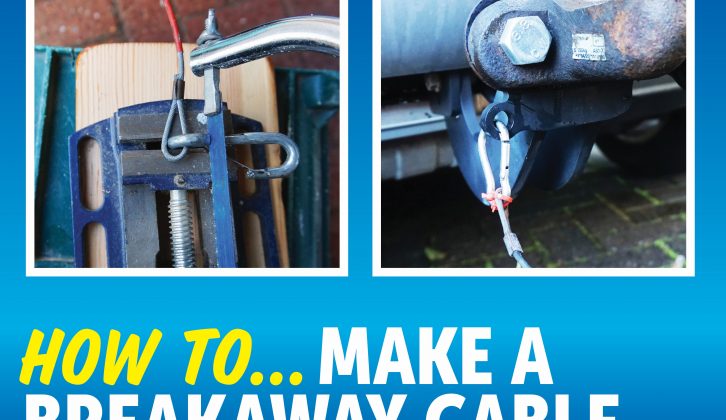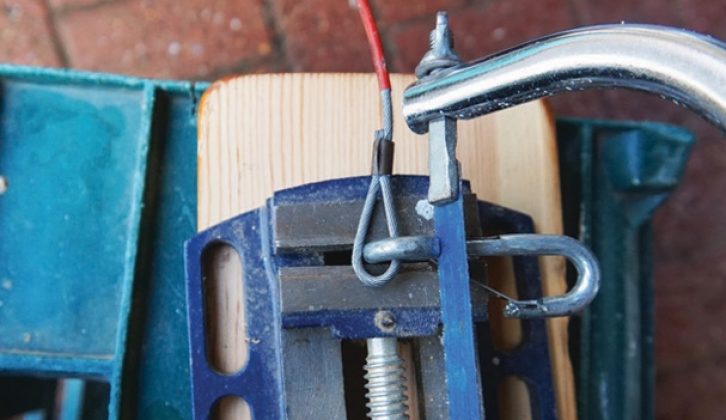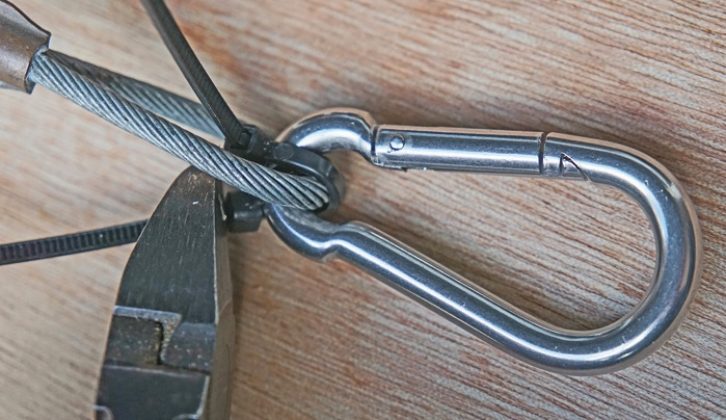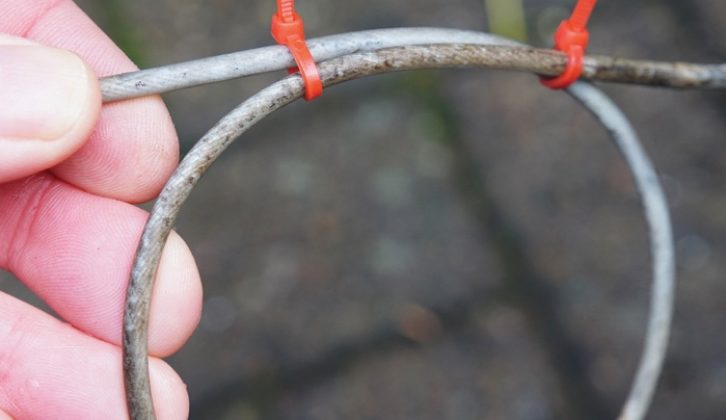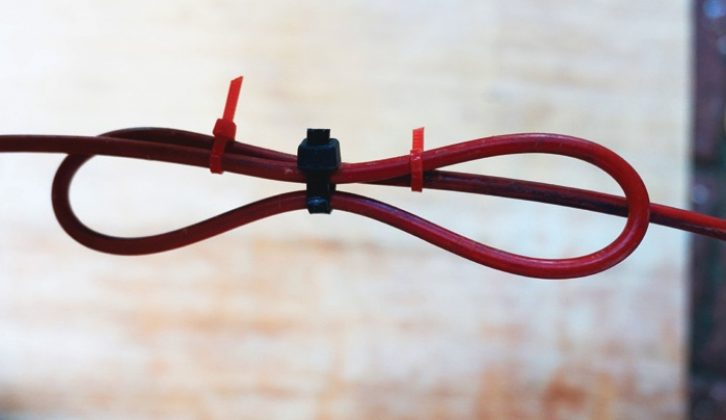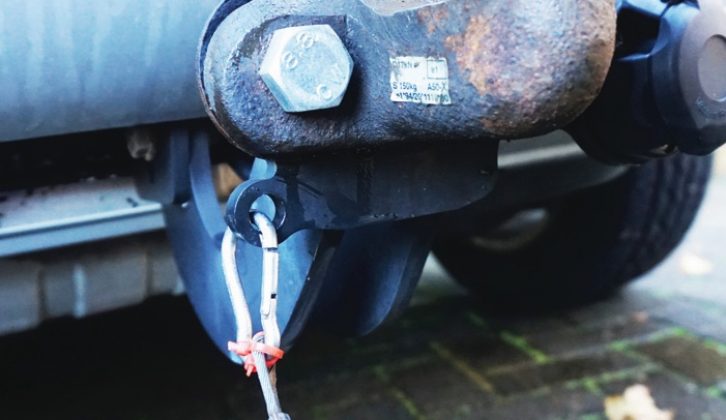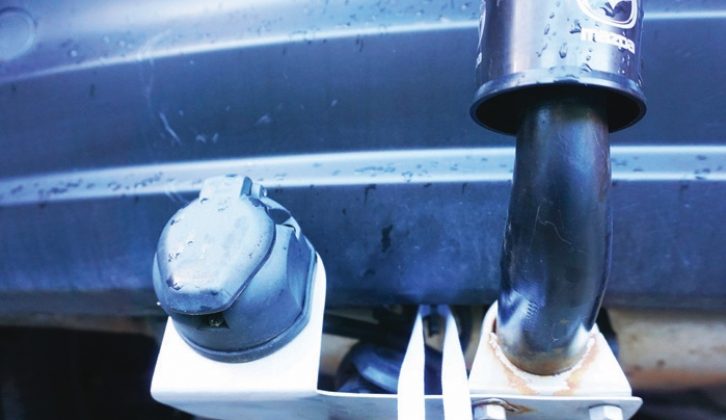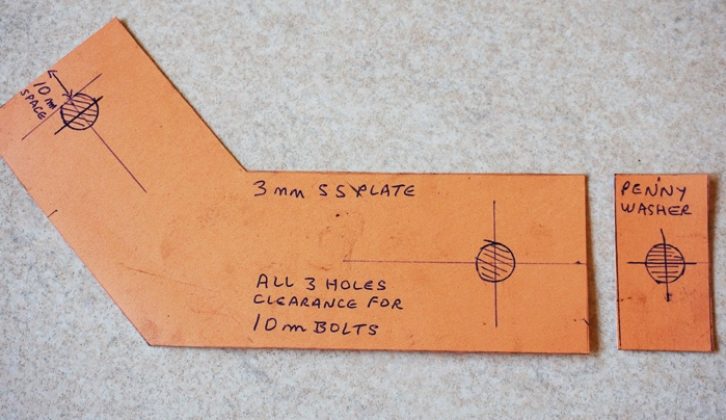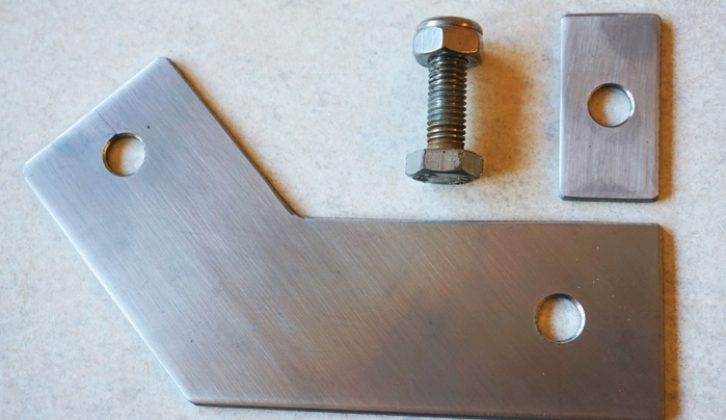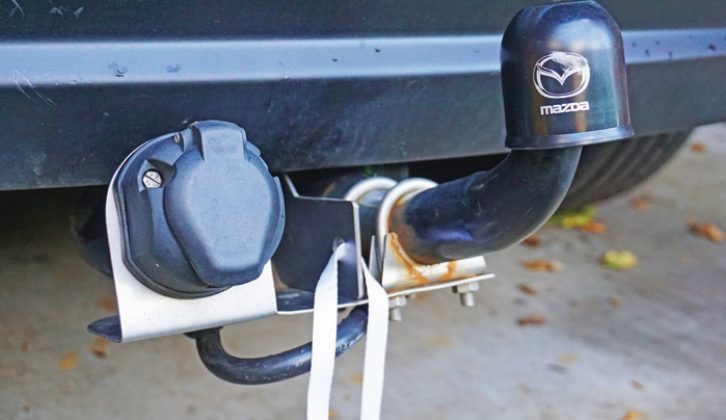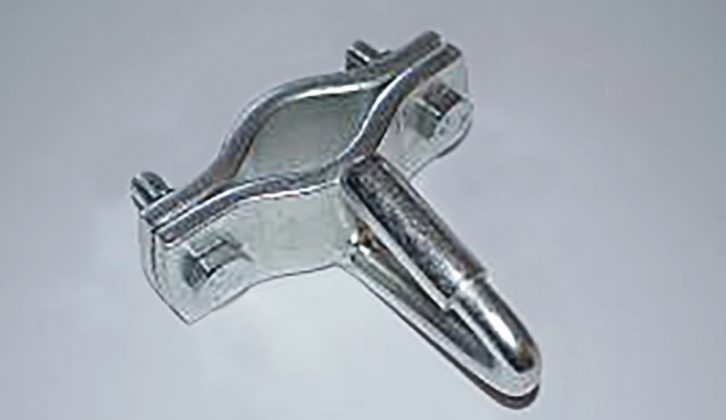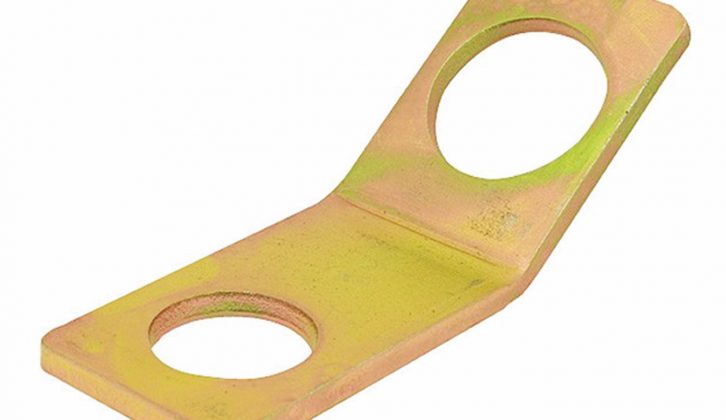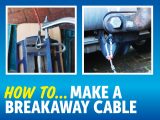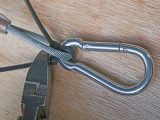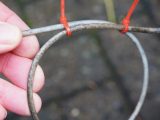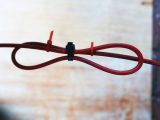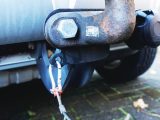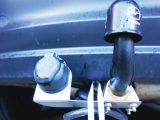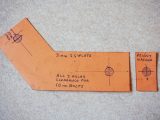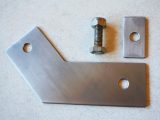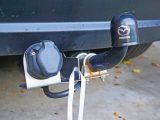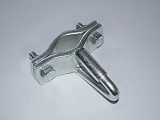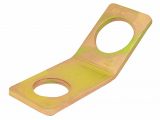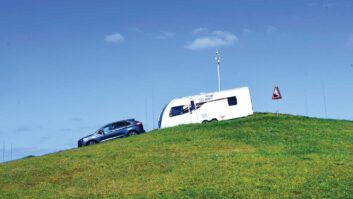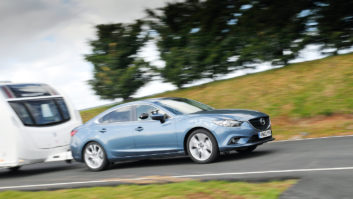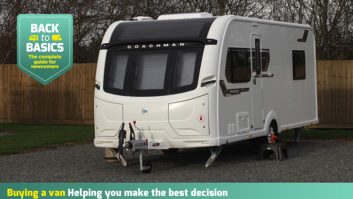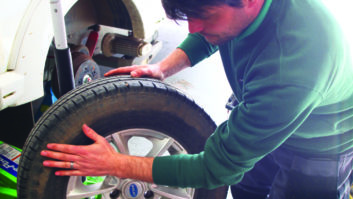All types of braked trailer, including caravans, must have a breakaway cable.
At the caravan end, the cable is fitted to the lower end of the brake lever, and at the car end, it is looped around the towball, or better still, clipped to a special eye on the towbar.
If the caravan should detach itself from the car while in motion, the breakaway cable will pull on the caravan brake, then snap, allowing the caravan to come to a rapid and safe halt in a straight line, away from the towing vehicle.
I suspect this scenario has not occurred on a sufficient number of occasions to confirm that the theory works quite like this in practice! However, you are legally required to attach your breakaway cable to the car.
Attaching the breakaway cable
In this country, it has always been the convention to loop the cable around the towball and clip it back onto itself.
However, this is not a great idea, because if the van comes off the towball, so could the cable loop, and if the towball detaches, which is not unknown, you will also have no means of pulling on the caravan brake.
If you have a bolt-on towball, you could use a proprietary breakaway cable attachment bracket, which is fitted to one of the two towball mounting bolts. If your towball is the removable or swan-neck type, you can buy a clamp which attaches to the neck.
But best of all – because it is an integral part of the towbar – is the designated attachment point, which has been a legal requirement for all UK cars fitted with towbars since 1998, and for vans and motorhomes since October 2012.
The regulations are stricter in the Netherlands, Germany and Switzerland, and there have been some reports of Dutch police stopping tow cars and threatening to fine caravaners for looping breakaway cables round their towball, rather than using a designated attachment point on the towbar.
It is unclear whether they would be within their rights to apply an on-the-spot fine if the practice is legal in the driver’s home country, but personally, I would not wish to challenge them and in any event, use of a designated attachment point is by far the safest and best practice.
Using a breakaway cable and clip
The breakaway cable usually terminates in a galvanised clip, designed to clip around the cable after it has been passed through the large oval hole in the attachment point, or looped around the towball.
It must not be used to clip directly to an attachment point. If you wish to attach directly, you need to fit a ‘heavy-duty’ breakaway cable, which has a carabiner hook for this purpose.
A simpler alternative is to buy a good-quality stainless steel carabiner of a suitable size, online or from a marine chandler, bearing in mind the safety warning below.
The old clip can be sawn off using a hacksaw and the new carabiner clipped on. Buy an eyeless carabiner, so the cable can be slipped down to the small end, where it can then be retained by a couple of small, crossed cable ties.
SAFETY WARNING
This is not a DIY project – carabiners, cable length adjustment and attachment point extensions must be approved/overseen by a qualified engineer.
Future Publishing Limited, the publisher of practicalcaravan.com, provides the information in this article in good faith and makes no representation as to its completeness or accuracy. Individuals carrying out the instructions do so at their own risk and must exercise their independent judgement in determining the appropriateness of the advice to their circumstances. Individuals should take appropriate safety precautions and be aware of the risk of electrocution when dealing with electrical products. To the fullest extent permitted by law, neither Future nor its employees or agents shall have any liability in connection with the use of this information. You should check that any van warranty will not be affected before proceeding with DIY projects.
If the caravan detaches from the car while in motion, the cable helps to bring it to a rapid, safe halt
